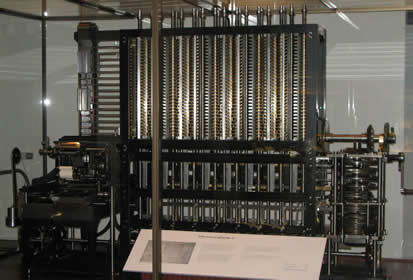Ten Commandments of Computer Ethics
 The Difference Engine No.2, built from Babbage's design
The Difference Engine No.2, built from Babbage's design
Charles Babbage began in 1822 with what he called the Steam powered Difference Engine, made to compute values of polynomial functions. This first difference engine would have been composed of around 25,000 parts, weighed fifteen tons (13,600 kg), and would have been 8 ft (2.4 m) tall. Although Babbage received ample funding for the project, it was never completed. He later (1847–1849) produced detailed drawings for an improved version, "Difference Engine No. 2", but did not receive funding from the British government. His design was finally constructed in 1989–1991, using his plans and 19th-century manufacturing tolerances. It performed its first calculation at the Science Museum, London, returning results to 31 digits.
Today we interact with computers and devices not just at our desks but in a variety of different contexts - while on a run, on the subway, or in a car, etc. and we could control our world with fingertips. In this context, we need to think about Computer Ethics.
Ten Commandments of Computer Ethics
 Computer Ethics
Computer Ethics
The Ten Commandments of Computer Ethics were created in 1992 by the Computer Ethics Institute. The Ten Commandments is "a set of standards to guide and instruct people in the ethical use of computers."
- Thou shalt not use a computer to harm other people.
- Thou shalt not interfere with other people’s computer work.
- Thou shalt not snoop around in other people’s computer files.
- Thou shalt not use a computer to steal.
- Thou shalt not use a computer to bear false witness.
- Thou shalt not copy or use proprietary software for which you have not paid.
- Thou shalt not use other people’s computer resources without authorization or proper compensation.
- Thou shalt not appropriate other people’s intellectual output.
- Thou shalt think about the social consequences of the program you are writing or the system you are designing.
- Thou shalt always use a computer in ways that ensure consideration and respect for your fellow humans.
|